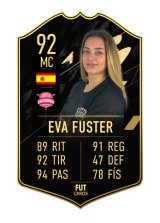In the rapidly evolving world of digital entertainment, customization has become a cornerstone of engaging and personalized gaming experiences. From simple avatar changes to complex rule modifications, players now expect a level of control that allows them to tailor games to their preferences. This article explores how customization drives interactivity, enhances emotional connection, and shapes the future of gaming, supported by practical examples and research findings.
- Introduction to Customization in Modern Gaming
- The Psychological and Emotional Benefits of Customization
- Types of Customization in Modern Games
- How Customization Creates a More Interactive Experience
- Case Study: Aviamasters – Game Rules as an Example of Customization
- Challenges and Limitations of Customization in Modern Games
- The Future of Customization in Gaming
- Practical Guidelines for Developers to Implement Effective Customization
- Conclusion: The Transformative Power of Customization in Enhancing Interactivity
Introduction to Customization in Modern Gaming
Customization in gaming refers to the ability of players to modify and personalize various aspects of a game, thereby creating a unique experience tailored to their preferences. This feature enhances immersion, allowing players to feel more connected to the game world and their role within it. Over the past decades, the scope of customization has expanded from cosmetic options to complex rule changes, reflecting a broader shift towards player-centric design.
Historically, early video games offered limited customization—often restricted to choosing character colors or simple skins. Today, advancements in technology enable comprehensive personalization, including creating custom characters, designing environments, and even modifying game mechanics. This evolution is driven by the desire for greater engagement and retention, as studies show that players who enjoy extensive customization features are more likely to spend time and return to a game repeatedly.
Evolution of Customization Features
The progression from static to dynamic customization reflects technological innovations such as cloud computing, AI, and user-generated content platforms. Modern games now often include in-game editors, mod support, and adaptive algorithms, all designed to empower players and keep experiences fresh. For example, multiplayer games like Fortnite and Roblox have built-in tools that enable players to create and share content, fostering vibrant communities and prolonged engagement.
Impact on Player Engagement and Retention
Research indicates that customization significantly boosts player engagement by increasing a sense of ownership and control. When players can shape their avatars or game environment, they develop a stronger emotional attachment, which correlates with higher retention rates. This phenomenon is supported by data showing that personalized gaming experiences lead to longer play times and increased likelihood of recommending the game to others.
The Psychological and Emotional Benefits of Customization
Enhancing Player Agency and Ownership
Customization grants players a sense of agency—control over their gaming environment and character identity. This empowerment enhances engagement, as players feel their choices matter. For instance, allowing players to design their own avatar’s appearance or modify gameplay parameters fosters a feeling of ownership, which is linked to increased satisfaction and emotional investment.
Fostering Emotional Connection through Personalized Content
When players see their personal touches reflected in the game world, it cultivates an emotional bond. Customized content—such as unique skins or tailored storylines—can evoke pride, nostalgia, or a sense of accomplishment. This emotional connection encourages players to invest more time and develop a lasting attachment to the game, enhancing overall experience.
Customization as a Tool for Self-Expression and Identity Formation
Games that allow players to express their personality—through appearance, behavior, or choices—serve as virtual mirrors of their identity. This aspect is especially evident in role-playing games (RPGs) where character customization reflects personal values or aesthetic preferences. Such self-expression can strengthen players’ sense of authenticity and belonging within the gaming community.
Types of Customization in Modern Games
Visual Customization: Avatars, Skins, and Environments
Visual customization remains the most visible and prevalent form. Players can alter character appearances, select skins, or modify backgrounds and environments. For example, games like League of Legends offer extensive skin options, allowing players to personalize their champions’ looks, which enhances aesthetic appeal and personal expression.
Gameplay Customization: Difficulty Levels, Rule Modifications, and Adaptive Challenges
Adjusting game mechanics enables players to tailor difficulty and challenge levels. Some titles incorporate adaptive difficulty that responds to player performance, maintaining engagement. The example of Aviamasters demonstrates this well, where players can modify game rules—such as water loss or malfunctions—to suit their skill level, creating a more personalized and balanced experience. More details on this approach can be found in the Aviamasters RTP report.
Narrative Customization: Branching Storylines and Character Backstories
Narrative choices allow players to influence story outcomes, fostering deeper engagement. Games like The Witcher series or Detroit: Become Human exemplify this, where decisions impact character fates and story arcs. Such branching narratives enable players to craft unique experiences aligned with their values or preferences.
How Customization Creates a More Interactive Experience
Encouraging Active Participation versus Passive Consumption
Customization shifts players from passive observers to active creators. Instead of merely playing a predefined role, players can design their avatars, modify environments, or create new content, which enhances engagement. For example, sandbox games like Minecraft empower players to build complex structures, fostering creativity and ownership.
Facilitating Player-Driven Content Creation and Sharing
Modern games often include tools for sharing custom content, encouraging community interaction. Platforms like Steam Workshop enable players to upload and showcase their creations, which can then be incorporated into the game or shared with others. This community-driven approach amplifies interactivity and prolongs the game’s lifespan.
Customization as a Means to Increase Replayability and Unpredictability
When players can alter rules or environments, each playthrough can differ significantly, boosting replay value. Aviamasters exemplifies this by allowing modifications such as water loss or malfunctions, making each session unpredictable and unique. Such variability keeps players engaged over longer periods.
Case Study: Aviamasters – Game Rules as an Example of Customization
Overview of Aviamasters’ Game Rules and Their Flexibility
Aviamasters demonstrates how flexible rule sets can serve as a powerful customization tool. The game allows players to modify various parameters, such as water loss rates and malfunctions, creating tailored challenges that match their skill levels and preferences. This approach aligns with modern trends emphasizing player agency and adaptive experiences.
How Players Can Modify Game Parameters to Suit Their Preferences
Players can adjust specific rules—like the frequency of malfunctions or water loss—to increase or decrease difficulty. Such modifications are supported by the game’s flexible rule engine, enabling a highly personalized experience. These customizations not only enhance engagement but also foster a sense of mastery and ownership.
The Role of RTP (97%) and Specific Rules in Personalized Gameplay Experiences
In Aviamasters, the RTP (Return to Player) rate of 97% exemplifies how transparency and customization of key parameters influence player trust and satisfaction. Additionally, specific rules, such as water loss or malfunctions, can be fine-tuned to match individual preferences, providing a tailored gaming journey. Such features illustrate the ongoing importance of balancing randomness with player agency, creating experiences that are both fair and engaging. For more insights, see the Aviamasters RTP report.
Challenges and Limitations of Customization in Modern Games
Balancing Customization Options with Game Fairness and Integrity
Overly extensive customization can threaten game fairness, especially in competitive environments. Developers must ensure that modifications do not create imbalances or exploitations. For instance, allowing unlimited rule changes without safeguards could undermine the game’s integrity, leading to unfair advantages or a degraded experience for others.
Technical Constraints and Development Complexity
Implementing sophisticated customization features requires significant technical resources, including flexible engine architecture and comprehensive testing. Complex rule systems, like those in Aviamasters, demand ongoing maintenance to prevent bugs and ensure compatibility across platforms.
Potential for Overwhelming or Confusing Player Choices
Too many options can lead to decision fatigue or confusion, diminishing user experience. Developers should prioritize intuitive interfaces and meaningful choices, avoiding unnecessary complexity that might discourage players from experimenting with customization features.
The Future of Customization in Gaming
Emerging Technologies: AI, Procedural Generation, and Virtual Reality
Advancements in AI enable real-time adaptive customization, where the game responds dynamically to player behavior. Procedural generation creates vast, unique environments and content, reducing developer workload and increasing variability. Virtual reality further immerses players, allowing physical customization through motion controls and spatial interactions.
Personalization through Data Analytics and Adaptive Algorithms
Data-driven personalization tailors game experiences based on player preferences, play styles, and performance. Adaptive algorithms modify difficulty or content delivery, ensuring optimal engagement and challenge. This trend emphasizes user-centric design, fostering long-term loyalty.
Ethical Considerations and User Privacy Concerns
As customization becomes more data-dependent, concerns about privacy and ethical use of personal information grow. Developers must implement transparent data policies and prioritize user consent to maintain trust and comply with regulations.
Practical Guidelines for Developers to Implement Effective Customization
Designing Intuitive and Meaningful Options
Customization features should be accessible and straightforward, avoiding overwhelming menus. Use clear labels and presets to help players quickly understand their choices. For example, providing predefined themes alongside custom options can streamline the process.
Ensuring Accessibility and Inclusivity
Design with diverse players in mind, including options for colorblindness, motor impairments, and cognitive differences. Incorporate flexible controls and adjustable settings to make customization inclusive for all users.
Testing and Balancing Customized Experiences for All Players
Thorough testing ensures that customization options do not disrupt gameplay balance or introduce bugs. Collect player feedback to refine features, and provide guidance to help users make effective choices, maintaining fairness and enjoyment across the player base.

